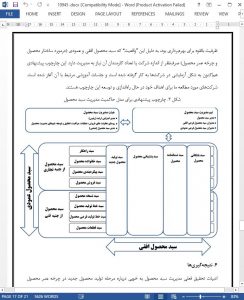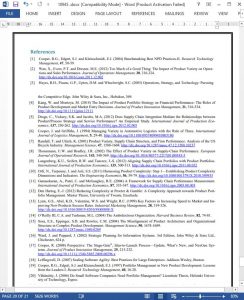Abstract
Companies face an important question on whether they should allow product portfolio renewal to occur without interference by merely adding new products, or should the renewal be governed based on strategic and financial targets over life cycle? New product development phase is well covered in the product portfolio management (PPM) context, but later product life cycle phases are not covered well in this context. Neither are the different product structure levels adequately taken into account, instead the current PPM only discusses the “product” in general terms. Based on analysing the portfolio related practical challenges in ten case companies, and realising the deficiencies of current PPM theory motivated this explorative multiple case study. The principal results of this study involve revealing the need for a new potential PPM governance model that enables managing commercial and technical product portfolios over life cycle phases. A governance model framework, based on horizontal and vertical portfolios managed by two centralised teams, is proposed. Based on the data, and views of industrial experts, the created new PPM governance model has potential to aid business managers in understanding PPM as an entity that has a role in managing existing product portfolios and their renewal based on commercial and technical portfolios over life cycle as collaboration between business and engineering teams in all organisational levels.
1. Introduction
Focus on fulfilling short term customer requirements over the past 20 years has resulted in vast amounts of incremental type of new products and product development projects. As a consequence, less pure new products, completely new product innovations to the world have been created [1]. A diverse product portfolio is seen as a way to increase sales and to fulfil customers’ requirements [2]-[4], a leading trend where more products are introduced than removed. For example, according to [5] for each removed product, 1.8 new ones are added to the portfolio. These above described issues are potential drivers for many product portfolio management (PPM) challenges in industry. Overly broad product range can lead to mass confusion by the customers, thus weakening overall sales and the sales per product ([2] [6]-[8]). Also, unnecessarily broad product offering leads to product complexity, negatively impacting productivity, product development time and demand supply chain costs [9]- [11]. Company’s product portfolio may expand or even explode rapidly due to simultaneous company mergers and acquisitions, e.g. [12]. A fundamental challenge in PPM is the lack of interest and understanding about the PPM concept by different teams of senior management.
4. Conclusions
The current literature on PPM covers well the NPD phase of the product life cycle including related product portfolio management targets and KPIs, processes and tools. PPM decisions are seen as the responsibility of executive level cross functional teams. However, there are no practical descriptions of the PPM governance on how to manage the product portfolio both vertically over product structure levels and horizontally over all life cycle phases.











